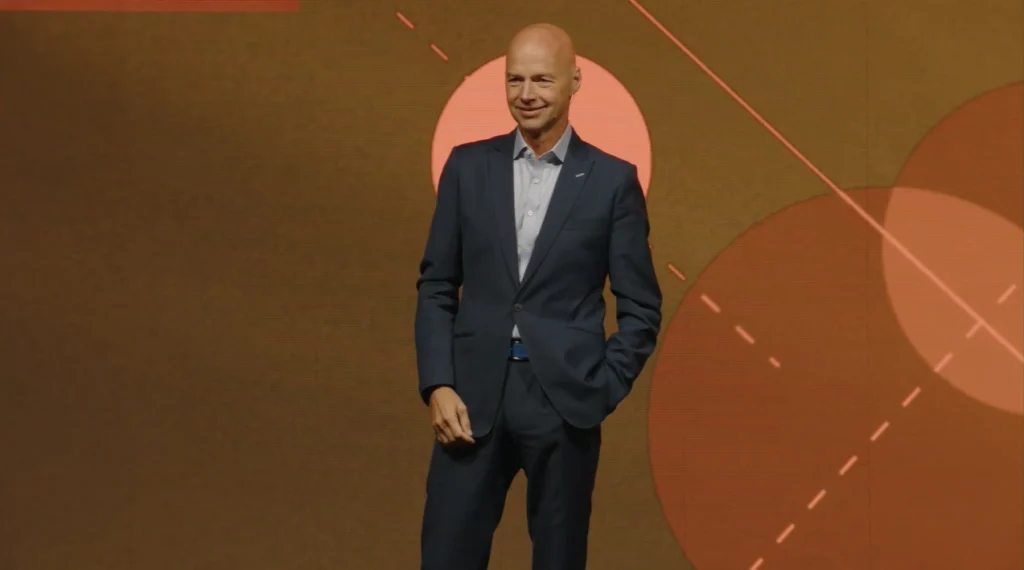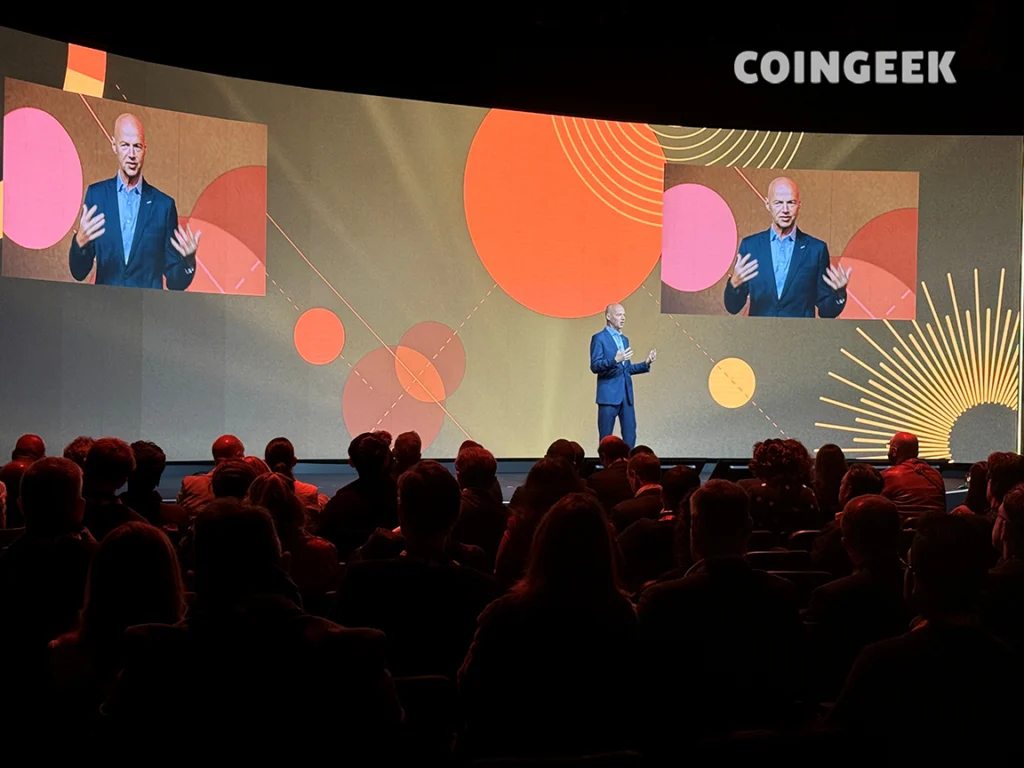|
Getting your Trinity Audio player ready...
|
The London Blockchain Conference 2025 put its best foot forward as it kicked off this morning at Evolution in Battersea Park: visionary and driverless car legend Sebastian Thrun gave the opening keynote.
Thrun is perhaps best known for his work on driverless cars. In 2005, he led the team that won DARPA’s well-known ‘Grand Challenge,’ an open competition to see who could build the first truly driverless vehicle. His success here led to him being chosen by Google (NASDAQ: GOOGL) to lead their own driverless initiative.
Thrun struck a grand, optimistic note, telling the crowd that we are witnessing an ‘AI singularity,’ a point where we collectively depart from the boundaries of our existing knowledge and enter truly uncharted waters.
“We are not obviously going through an incredible revolution in AI,” he beamed at the audience.
“It’s been the most transformational era that I’ve ever seen. We are squarely in the middle of a singularity where it’s hard to say what’s going to happen in the next 2-3 years.”
But first, Thrun took us back to where his journey with driverless cars began—in 2005, when he was at Stanford University. The United States’ famous Defense Advanced Research Projects Agency (DARPA), the governmental division that brought us the Internet, had put out an open call, inviting anyone—companies, individuals, universities—to develop a self-driving car. The Prize? $1,000,000.

Thrun’s team came up with Stanley, now famously housed in the Smithsonian, and won the prize in 2005. Shortly afterward, he was approached by Google to build one for them.
Thrun says he was initially skeptical, blaming his status as an expert.
“Experts are great at doing something over and over again. If you want to build a pizza restaurant, you can find an expert to help you do it. But if you want something new, experts are the worst people to ask: they’re experts of the past, and they have to have an opinion,” he said.
Google CEO Larry Page, however, told him that if Google could produce a truly driverless car, it would prove to be 100x more lucrative than their current business.
“I decided to try it out, but without experts. I hired all the best people from the DARPA challenge, and within a year and a half, we built a car that could drive nearly all streets in California.”
This brings Thrun to perhaps his biggest takeaway from these experiences: machine learning means that driverless vehicles will always be safer than human ones.
“We live in a world where we have a speed of learning that surpasses human learning. When we started out, we had to take over every few miles. Every half a year roughly, we 10x that performance. We saw the performance curve of the self-driving car go up while the human curve stayed flat.”

In 2023, he says AI had finally reached an inflection point, and it could be credibly said that self-driving cars were as safe as human driving.
These insights fuel Thrun’s efforts to create the next revolution in transportation: flying cars. At Kitty Hawk, Thrun’s current company, they’re working on lightweight electric aircraft. As they built them, they discovered several things: one, the best model for a flying car isn’t simply a car that flies but a drone: vertical takeoff, horizontal movement in the air, and then vertical landing.
But another insight is much the same as came from his experience with DARPA and Google: a flying car without a pilot is safer than a flying car with one.
“If you build a plane without pilots, you’re universally safer than with pilots. The world doesn’t know it yet, but it’s absolutely correct.”
There are other benefits to flying cars, or electric vertical take-off and landing vehicles (EVTOLs). They’re greener than cars: for any kilometer such a vehicle would travel, it’d demand energy equivalent to about 1/3 of a Tesla. They’re quieter, too. And best of all—if all your cars fly, you no longer need roads or carparks—just landing pads.
Thrun is sincere about his belief that flying cars are as much around the corner as driverless ones were just 10 years ago. To him, there’s no reason that the current model of ground-based cans on wheels should be thought of as the gold standard of transportation. He says we’re about ten years behind, but we’re getting there, and he predicts that the legacy car industry is in big trouble.
“If you believe I’m a lunatic, you might be correct. But you would have taken the same position if I’d spoken to you a decade ago about driverless cars.”
In order for artificial intelligence (AI) to work right within the law and thrive in the face of growing challenges, it needs to integrate an enterprise blockchain system that ensures data input quality and ownership—allowing it to keep data safe while also guaranteeing the immutability of data. Check out CoinGeek’s coverage on this emerging tech to learn more why Enterprise blockchain will be the backbone of AI.
Watch: Adding the human touch behind AI

 12-25-2025
12-25-2025 




